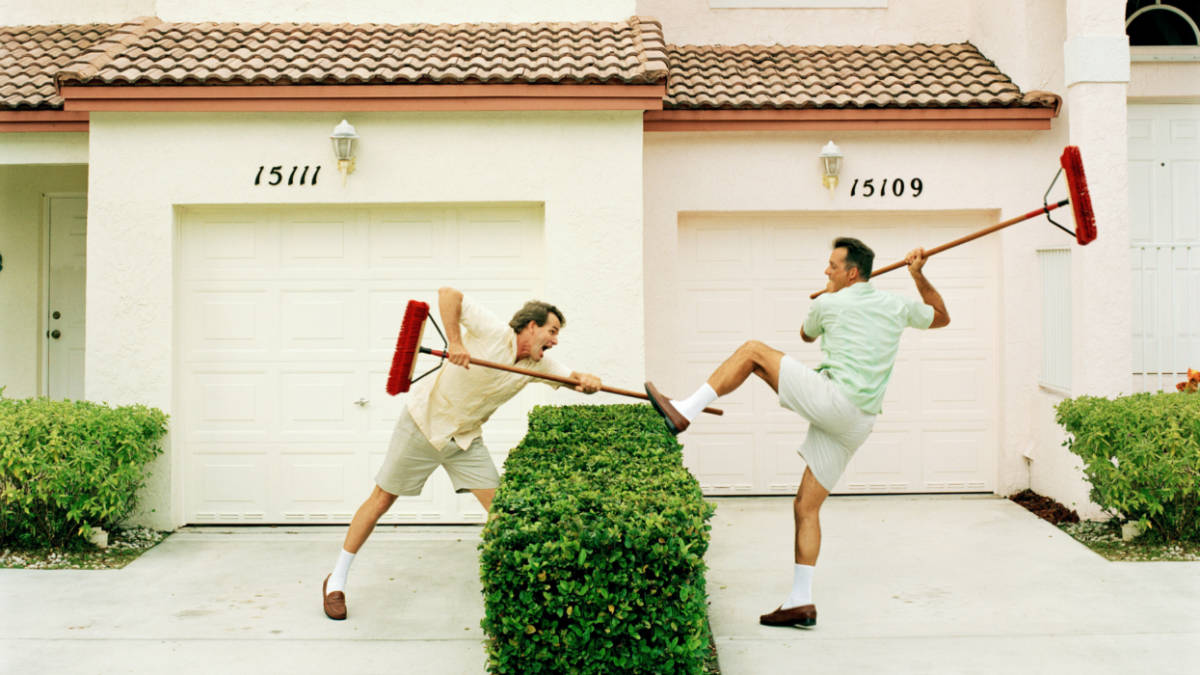Investor FOMO kicks in with first-time buyer influx to lift prices

The big Aussie housing fight is heating up. Pic: Getty Images
Investors are going head-to-head with first-time buyers to secure affordable properties before the government’s expanded deposit scheme drives prices even higher.
A fear of missing out has gripped investors as they go head-to-head with first-home buyers to secure affordable properties, driving a “market frenzy” and some panic buying ahead of expected price rises.
The earlier start of the federal government’s expanded 5 per cent deposit scheme on October 1 has brought forward demand from both first-timers and investors trying to beat an influx of scheme-backed buyers.
Lachlan Vidler, a director at property investment company Atlas Property Group, said many investors were worried they would have to pay higher prices due to the increased demand from first-home buyers.
“A lot of people are coming to us and talking about ‘have we missed the boat, have we missed the market, we want to get in yesterday because it’s just going to send prices through the roof’,” he said.
“There’s a huge sense of FOMO that’s starting to be developed around the marketplace from investors. At the end of the day investors are obviously highly motivated because it’s all about the financial returns and getting the best bang for buck that they can.
“There’s a lot of nervousness around people who have that little bit of concern that now they might be 5 or 10 per cent behind the pace.”
Mr Vidler, who is also chair of Property Investment Professionals of Australia, said open homes and auctions were attracting a lot more people and registered bidders, adding to the sense of FOMO among buyers in general and investors in particular.
“Depending on what you’re buying and where you’re buying, you could very easily be paying tens of thousands of dollars more, just because of the sheer nature of competition.”

The expanded scheme, which had been due to start on January 1, has unlimited places, no income caps and higher property price caps.
Real Estate Buyers Agents Association of Australia president Melinda Jennison said markets were already in a frenzy and prices had already jumped in many locations as buyers panicked about the scheme’s impact on the wider market.
She said properties that were selling for $750,000 a month ago were now selling for close to $800,000, and what was $800,000 would soon be $900,000 – making it more difficult for first-timers to secure finance even with a 5 per cent deposit.
“Throughout September a lot of the frenzy was caused by other buyers who are not necessarily first-home buyers – investors and other buyers that are trying to get into the market,” she said.
“They were trying to beat the rush because they were expecting more first-home buyers to come into the market come October 1.”
Hotspotting director Terry Ryder said there was an elevated level of buying as people tried to get in before the increased demand for a limited number of homes for sale drove up prices.
“We are going to see prices continuing to rise probably a little bit more strongly because we’ve got this additional demand in the market,” Mr Ryder said.
“There’s also evidence in the lead-up to October 1 that there’s been a bit of panic buying from people trying to get in before prices rise.
“The market does believe prices are going to rise strongly because of this scheme.”
Ms Jennison, the founder and managing director of Streamline Property Buyers, noted many property investors were shopping in the same markets as first-home buyers as both groups targeted more-affordable price segments.
“That’s why we’ve seen this increasing flurry as investors who were always preparing to enter the market fast-tracked their decision knowing that more competition was coming.
“They wanted to jump in before all of these first-home buyers who were taking advantage of the homebuyer guarantee scheme actually became their competitors as well.”
Ms Jennison said FOMO was leading to some buyers taking unnecessary risks, such as dropping conditions, not sticking to their budgets, buying properties sight unseen, and not completing adequate due diligence before making offers.
“We’re definitely seeing some risk-taking activity simply for people that want to get into the market quickly.”
Record prices to rise
Anthony Albanese has admitted the expansion of the Home Guarantee Scheme, which has been rebranded as the Australian Government 5 per cent Deposit Scheme, will lead to “a slight increase in prices”.
Cotality research director Tim Lawless said first-home buyers taking advantage of government incentives would lead to increased competition for record-low listings, adding to price pressures, especially around the upper limit of the price caps.
“We could see the value of houses in well-located areas, recently unlocked by the expanded caps, surpass those new price caps quite rapidly.”
Investors targeting the same markets could also add to the price pressures, after home prices hit a new peak in September.
“Investors often engage with the same market segments as first-home buyers: areas around the mid-range of the pricing spectrum, that are close to transport opportunities and where amenity is relatively plentiful,” Mr Lawless said.
“Investors also tend to focus on opportunities for capital gains. With the middle and lower quartile of the market likely to see stronger demand as first-home buyer activity lifts, we could see investors speculating on the opportunity for higher capital gains.
“If I’m right, that would drive prices even higher, making the affordability challenge even worse.”
The latest Australian Bureau of Statistics data showed the number of new investment loans rose by 3.5 per cent in the June quarter, after two consecutive quarterly falls. Investor lending outpaced the 0.9 per cent rise in new owner-occupier loans.
Ms Jennison said investor activity had increased throughout 2025 on the back of interest-rate cuts that increased borrowing capacity and improved confidence in the property market and among consumers.
“We’ve also seen in some markets very low stock and very competitive buying and that’s also contributed to price growth, so investors are competing for a limited volume of stock.”
Cotality data showed home prices rose by 0.8 per cent in September, the strongest monthly gain for national dwelling values since October 2023. Annual growth was sitting at 4.8 per cent.
Mr Lawless said the rate of growth had been gradually gaining momentum since the Reserve Bank’s first rate cut in February.
“The combination of below-average listings and above-average demand is likely to push prices higher and at a faster rate than what we are currently seeing.”
But he said the pace of growth was unlikely to match recent cyclical peaks.
“Given how stretched housing affordability is, along with home loan serviceability limits, it’s hard to see the pace of capital gains reaching the highs we saw through early 2023, or for that matter, the rate of growth through the pandemic.”
The monthly gains in Cotality’s national home value index peaked at 3.1 per cent during the height of the pandemic boom in March 2021, and during the upswing from early 2023 hit a high of 1.3 per cent in May that year.
Mr Ryder said the expanded low-deposit scheme would drive prices higher in the affordable end of the market, where both first-home buyers and investors competed.
“That’s where we’ve seen the biggest percentage price growth in recent years and we’re going to see that continue because of the additional demand that this federal scheme will create.
“It’s a cheap short-term political action. They’re making affordability worse by putting further upward pressure on prices.”
Mr Ryder argued first-home buyers had the upper hand compared to investors, despite a belief that the latter had a tax advantage due to negative gearing.
“Negative gearing, and not every investor is negatively geared, it doesn’t increase your borrowing capacity and it doesn’t mean you can pay a higher price for a property.”
He said first-home buyers “are massively advantaged”, pointing to government schemes and stamp-duty concessions or exemptions, while investors had to pay land and capital gains tax, as well as higher interest rates than other buyers.
“If you’ve got two buyers for the same property, they’re both the same age and on the same income, one’s an investor and one’s a first-home buyer, the first-home buyer should win that competition every time because they’ve got all those advantages over the investor.”
This article first appeared in The Australian as Investor FOMO kicks in with first-time buyer influx to lift prices
Related Topics
UNLOCK INSIGHTS
Discover the untold stories of emerging ASX stocks.
Daily news and expert analysis, it's free to subscribe.
By proceeding, you confirm you understand that we handle personal information in accordance with our Privacy Policy.









